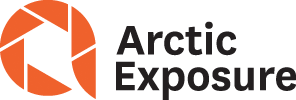Packing List & Useful Information
With years of experience leading photography tours and workshops in the Arctic, we have learned to prepare our participants as much as possible before their arctic adventure. Packing the right equipment and clothing for the tour will make your experience much more pleasant and your photography more successful. Please read through our packing list and make sure you bring the “Must have” on the tour.
We kindly ask you to pack light as it will make everyone’s life on the tour easier. Fitting your luggage in one suitcase or duffel bag per person plus camera gear bag will be greatly appreciated. Before we head out each day we kindly ask you to pack so that the things you need during the day like extra clothing is with you on the bus, or in your camera bag. Such as warm hat, gloves, extra socks, tripod etc.
IMMIGRATION IN LOFOTEN
Leknes Airport is one of the easiest airports in the world! If the ask purpose of visit, please say you are on photographic holiday if they want to know where you are staying, you can give the names of our hotels – provided in the information sheet we send out prior to the tour.
Also, check to see if your passport is valid. Your passport needs to be valid for at least 90 days after your arrival day. This applies to all Schengen countries. If you need a VISA to enter Norway your passport needs to be valid for over 6 months.
In early 2026, non-EU residents will need to apply for ETIAS when travelling to Europe. Learn more here: https://travel-europe.europa.eu/etias_en
AIRPORT TRANSPORT
We kindly ask you to send us your flight details when you have them booked so we can arrange the pick up at the airport.
TRAVEL INSURANCE
We recommend you purchase Travel insurance. Please note that individual travel insurance is not included in the tour prices. It is therefore important that clients arrange for their own travel insurance before visiting. Please contact us if you need any information on Travel insurance.
CAMERA EQUIPMENT
Must have
DSLR or SLR camera
Minimum 2 spare batteries and wall charger
Euro outlet adapter
Your essential 1st lens: Zoom lens, for example, wide angle 16-35 mm. On Aurora workshops, we suggest fast wide angle lenses, such as f2.8
2nd lens for example zoom lens 24-105 mm, or 70-2oo mm.
Shutter release cable (or remote)
Sturdy tripod and ball head with quick release. We highly suggest www.reallyrightstuff.com
Filters 0.6 and 0.9 Graduated Neutral Density filters soft edge (nice to have a hard edge as well)
Filter holder with adapter ring which fits your lens (82mm and 77mm very common)
3 or 6 stop filters, for example, the Lee small stopper.
Polarizer filter.
We highly suggest the Lee Filter System. Check out www.leefilters.com
Microfiber lens cloth. Good to have both large and small cloths, we need large when photographing waterfalls with spray
Minimum 32 GB of memory cards
Medium/large size camera bag which holds all your camera gear during the tour
Laptop to download images for review and/or processing during downtime
Back up camera body
Panoramic tripod head
Rain cover for camera & lens
GENERAL TRIP GEAR

Wool base layer top and bottom (Merino Wool does not smell unlike synthetic fibres after several days’ use).
2 fleeces (thick and thin)
Insulated water-resistant Hardshell/Softshell jacket/parka
Waterproof Hardshell pants, like Gore-Tex or similar
Personal bathroom items
Personal medications/vitamins
Waterproof trail shoes or hiking shoes – good to have spikes with you – if you do not own one let us know we can assist
Wool socks & regular socks
Underwear & wool or fleece underwear
Warm pair gloves
Warm hat
Passport
Credit cards
Pair street clothes
Nice to have
Earplugs
Sunglasses
Crampons for example https://www.amazon.com/Crampons-Microspikes-Cleats-Hiking-Spikes/dp/B08K88S9K2?th=1
Don’t forget your happy mood and passion for photography
GENERAL INFORMATION
Safety
Lofoten offers some dangers when travelling. Mainly the weather, it can change fast and you want to be prepared.
Weather
Much like Iceland, winter on Lofoten is a delicate balance between snow and rain. Or, as we like to say, Lofoten looks colder than it actually is (most of the time!). If you are travelling to Lofoten for the ‘winter look’ of the islands, then mid-January to late March is the best period. Expected temperatures from -5 to +5 degrees Celcius on average.
Before the new year, the weather is too inconsistent, it might snow or it might just rain. With January, more reliable winter conditions arrive, but not always! It can be 6˚C and raining for a week at any time, and typically there is some fluctuation between above and below freezing temperatures on a regular basis.
The days grow longer in February, though the sun still remains quite low on the horizon until the middle of the month. It’s a good mix of short days and long nights, providing enough time to get to separate locations for sunrise and sunset and a few other things at midday. By March the days begin to feel normal in length at the sun is relatively high in the sky; the long nights of the arctic winter are now gone
Transportation
We rent a comfortable Van for our travels in Lofoten
Meals
We will visit supermarkets and decide on meals each day.
Local currency
The Norwegian Krone as their currency. Banknotes 50, 100, 200, 500 and 1000 Norwegian kroner are in circulation. Coins, 1, 5, 10 and 20 kroner.
The most convenient way to bring your money is in the form of a debit or credit card, with some extra cash for use in case of an emergency.
ATMs
‘Mini-Banks’ (the Norwegian name for ATMs) are widespread and most accept major credit cards as well as Cirrus, Visa Electron and/or Plus bank cards. Check your bank’s fees for international withdrawals and transactions; it’s sometimes worth getting yourself a travel-focused pre-paid debit card to use instead.
Changing Money
Don’t assume that all banks will change money: in some places, you may need to shop around to find one that does. Rates at post offices and tourist offices are generally poorer than at banks but can be convenient for small amounts outside banking hours.
Credit & Debit Cards
Norway is well on its way to becoming a cashless society – you’ll find the vast majority of transactions these days are by card. Visa, Eurocard, MasterCard, Diners Club and American Express cards are widely accepted throughout Norway. If your card is lost or stolen, report it immediately.
Voltage
Electricity in Lofoten is 220-230 Volts, alternating at 50 cycles per second. If you travel with a device that does not accept 220 Volts at 50 Hertz, you will need a voltage converter. Most computer and camera chargers are dual voltage. If you are using an AA battery charger please make sure it is dual voltage.
Cellphone – Wifi & 3G/4G
In Norway, there are three main mobile phone operators: Telenor Mobil, Netcom and Network Norway. Mobile phones in Norway mainly operate on a GSM network. As Norway has a relatively young population, you’ll find that many mobile phone operators offer special discounted rates and cheap packages.
Norway’s internet network is fast and reliable. Wi-fi, 3G and frequently 4G are available right across the country, often in surprisingly remote locations.
A decent wi-fi connection is widely available at most hotels, cafes, restaurants and tourist offices; it’s nearly always free, although you’ll usually have to ask for the password or register to use it. Most of Norway’s airports offer free wi-fi; the standard service can be slow, but there’s sometimes an option to pay for faster access

